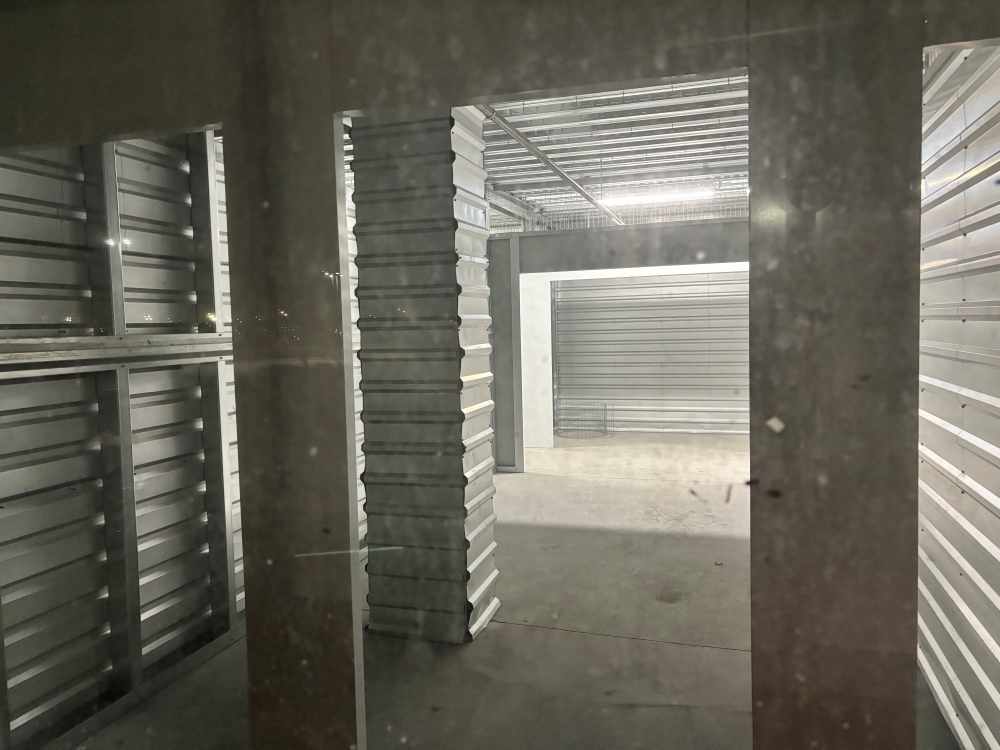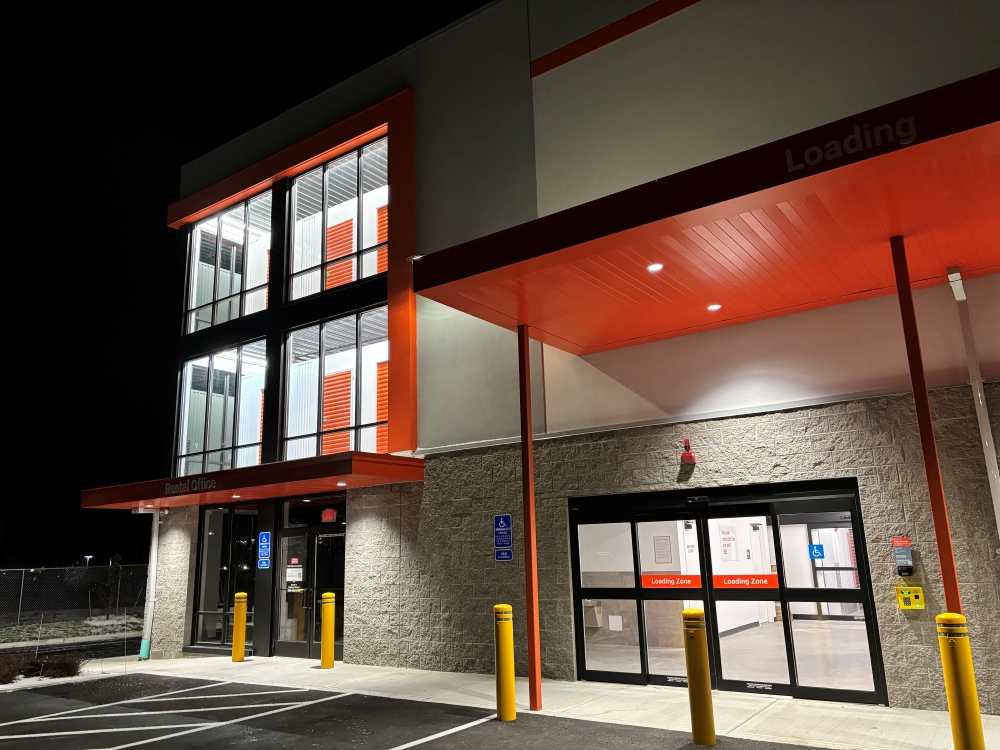For months, I wondered what the building going up at the intersection of Commerce Way and Resnick Road might be. An office complex? A manufacturing plant that would create good-paying jobs? A – gasp! – tech startup incubator?
Then came the big reveal: Another self-storage facility.
What a letdown.
The national company’s warehouse – with the appropriately generic name of Public Storage – is part of a, uh, “growing” trend in Plymouth and other communities with surging populations. The former Shaw’s supermarket on Pilgrim Hill Road, a nearly 60,000-square-foot space, is being converted into a self-storage center. The two newcomers join about a half dozen other established storage businesses throughout Plymouth. They include Stor-U-Self on Natalie Way, AAA Self Storage in Cedarville, and Airport Mini Storage on Roberts Road.
When I saw that the big box skeleton off Commerce Way would be yet another self-storage business, my first thought was: Do we really need so many places to keep our stuff? Given that our economy is market-driven, we do. It’s the old law of supply and demand. Part of the reason for this demand is that we’ve become a society of acquirers, with many people transitioning into full-blown hoarders.
While we consume at an astounding rate, we’re not adept at letting go. People buy products and collect things they never needed in the first place, and then don’t desire enough to keep at home. It’s no wonder that storage facilities are a nearly $40 billion business nationwide.
And it’s also not a surprise that an estimated 155,000 storage units are abandoned every year. Americans have short attention spans when it comes to making purchases – a “get it and forget it” attitude. Those aspirational dreams of acquisitions can devolve into nightmares of possession. Maybe that’s why storage units have long been fodder for horror scenarios, including last year’s low-budget movie “Storage Locker,” director Guillermo del Toro’s “Cabinet of Curiosities” anthology series on Netflix, and one of many chilling scenes in the 1991 classic “Silence of the Lambs.”

The popularity of storage businesses in Plymouth also has something to do with the large numbers of people moving into smallish spaces. Most new apartments and condos have limited or shared storage areas. People have to either ditch some of their goods or pay to store them off site. And it’s not cheap. According to Move.org, the average monthly price of a unit ranges from $70 to $300, depending on its size and accessibility.
But there’s something else happening here. Or rather, something not happening. While storage businesses fill a need, they also feel like a last resort when it comes to the town’s economic growth (well, excluding a casino or racetrack). The Shaw’s building was available for a long time. A storage facility was apparently the best – or only – option. These businesses don’t bring many jobs; certainly not career path jobs. They don’t make or really do anything. They don’t attract visitors to town to spend money. They’re architecturally boring, if not ugly. They consume a lot of energy for such a passive operation.
Can’t the town attract companies with more potential to make it a better place to live? That includes enlarging the commercial tax base in a major way, thus easing the tax burden carried by homeowners.

Sensing that my negativity was getting out of hand, I turned to an outside source for a less emotional take: Lee Hartmann, Plymouth’s longtime director of planning and development.
“It’s not 40b [affordable] housing,” Hartmann said, “and the pressure we have for that kind of residential development in all parts of the town is huge.” Storage facilities “have a positive tax flow,” he said. “There’s not a lot of traffic that comes out of them. From that standpoint, I think it’s positive.”
That sounds like a “it could be worse” response, I told him. He didn’t entirely agree.
“Warehousing, and that’s what this is, creates one of the highest [tax] returns,” Hartmann said. “It doesn’t create a lot of jobs, but it is something that doesn’t put a lot of demand on services.”
To be fair, Hartmann can’t keep a storage business from opening if it complies with zoning uses and other red tape. And he has a point that more apartments would further strain town services, not to mention increase the need for more storage units. But if – or when – Plymouth reaches the saturation point on self-storage, what will happen to some of these highly-specialized structures?
“Reuse of a [storage] building itself is limited,” Hartmann said, “but it’s not uncommon to see these things demolished and something else constructed on the site.”
Seems like a waste, but it’s true that commercial buildings often have a short shelf life. (Remember the Applebee’s that once stood where Bank of America is at Myles Standish Plaza?)
There’s more to say on this subject, but I’ll store those thoughts for another column.
Any way you slice it, mamma mia, this is a big anniversary!

“50 Days of Mamma Mia’s,” is underway. That’s what the Viscariello Hospitality Group is calling the 50-day celebration that started on Jan. 1 to mark the 1974 opening of its first restaurant, on Route 3A in Kingston.
“For 50 years our family has been honored to offer a place for our friends and neighbors to gather and enjoy each other’s company while sharing our favorite family dishes,” said Gina Viscariello Albanese, in a press release. She’s principal for the company and the daughter of founding brother Pasquale “Pat” Viscariello.
The anniversary celebration features activities such as a children’s coloring contest, raffles, a time capsule guest book, and trivia nights. (The next one is on Jan. 21.) On Jan. 24, the day Mamma Mia’s in Kingston opened a half century ago, all six Mamma Mia’s restaurants, including its two in Plymouth, will offer 50 percent off some menu items, along with giveaways. On Feb. 7, there will be a Lasagna Love match. The company will donate one meal to a South Shore family in need for each lasagna purchased at any Mamma Mia’s.
“When our parents moved to the U.S. with dreams of opening a restaurant, they never imagined we’d be here 50 years later with a full hospitality group of eight restaurants and three brands, operated by their children and grandchildren,” said Tony Viscariello, principal for VHG and son of founding brother Giovanni “John” Viscariello.
For updates, follow Mamma Mia’s on social media on Facebook and Instagram or visit mammamias.net/50th.
Wine bar gets a makeover, and a bow-tied bartender

The 1620 Wine Bar at Village Landing on the waterfront has a new look and name. The eight-year-old business “re-launched’ recently as Sip at 1620 Wine Bar. In a press release, the revamped interior is described as featuring “matte black walls” and “lush red crushed velvet drapes” that evoke “a modern speakeasy feel.” The 1620’s own wines are still being poured, but the focus is on cocktails and tapas.
“Our aim with Sip was to elevate the drinking, dining, and socializing experience beyond just wine and appetizers,” said owner Raquel Mullaney. “This meant a total transformation of not only the space itself but of our food and drink offerings as well.”
Standard cocktails such as Manhattans and Negronis share menu space with new signature drinks and seasonal specialties, according to Sip, prepared by “the bar’s aproned and bow-tied mixologist.” Now that’s old-school.
The tapas menu includes “rattlesnake mac and cheese” – without rattlesnakes – braised short ribs, and sweet chili chicken.
Also of note: babies and kids (including teens) are not welcome. This is a 21-plus space. In certain circles, that could be huge selling point.
“We like to say Sip is a ‘dark room for bright people’ who sometimes prefer a fireplace over a TV. Our aim is to provide a little hideaway from a hectic world,” Mullaney said.
Given the year ahead, and what we’ve already been through, a cozy hideaway sounds attractive.
To submit your business news for consideration, see the “Send us your business news” note at the top of the Business section. Mark Pothier can be reached at mark@plymouthindependent.org. One other thing: Unlike our news stories, this column sometimes includes the author’s opinions.

